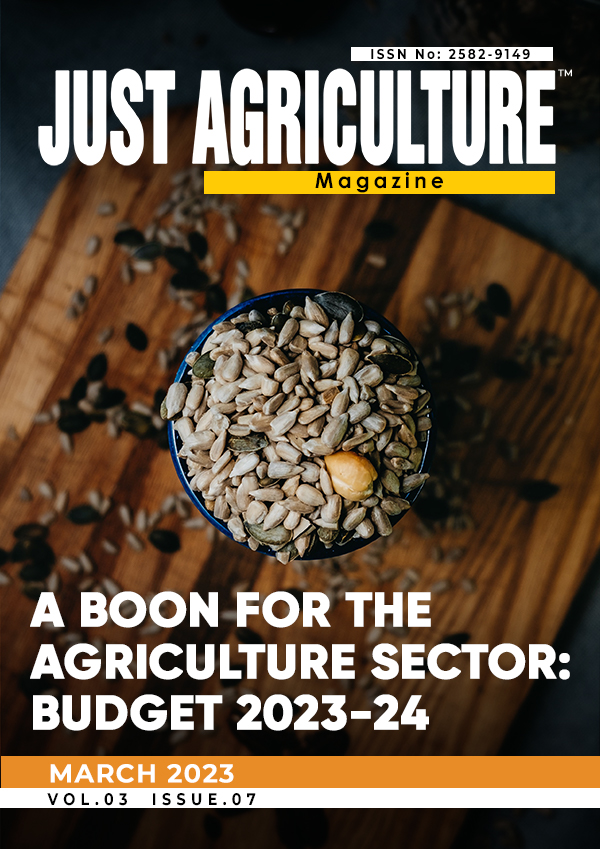march 2023 | Just Agriculture Magazine
India’s Leading Agriculture Magazine

A Boon For The Agriculture Sector: Budget 2023-24
- Author: Harish Kumar, Jyoti, Vijay Kumar And Ravi Singh Thapa
- Volume 3, Issue 07
- March 2023
Role Of Green Manuring In Soil Health Management
- Author: Dr. Kiran K. Khokhar
- Volume 3, Issue 07
- March 2023
Indoor Vertical Farming Technology
- Author: Monika R, Charukeshini R And Rajasekar G
- Volume 3, Issue 07
- March 2023
Monika R, Charukeshini R And Rajasekar G
- Author: Goutam Mahata
- Volume 3, Issue 07
- March 2023
Aeroponics: The Soilless Culture
- Author: Ahamed Fayas.s And B.rakavi
- Volume 3, Issue 07
- March 2023
Sheep Farming: A Profitable Business Plan For Peasantry
- Author: Shikha Awasthi, Somdutt Tripathi, Sakshi Shastri, B. K. Gupta, Vaishnavi Shukla, B. P. Mishra
- Volume 3, Issue 07
- March 2023
Importance Of Pumpkin Seeds And Its Health Benefits
- Author: Nidhee Sachan & Purnima Shah
- Volume 3, Issue 07
- March 2023
Minor Millets As Super Foods
- Author: Dr.pooja Chaturvedi, Dr.niharika Shukla Dr.rashmi Shukla And Dr.d.k.singh
- Volume 3, Issue 07
- March 2023
